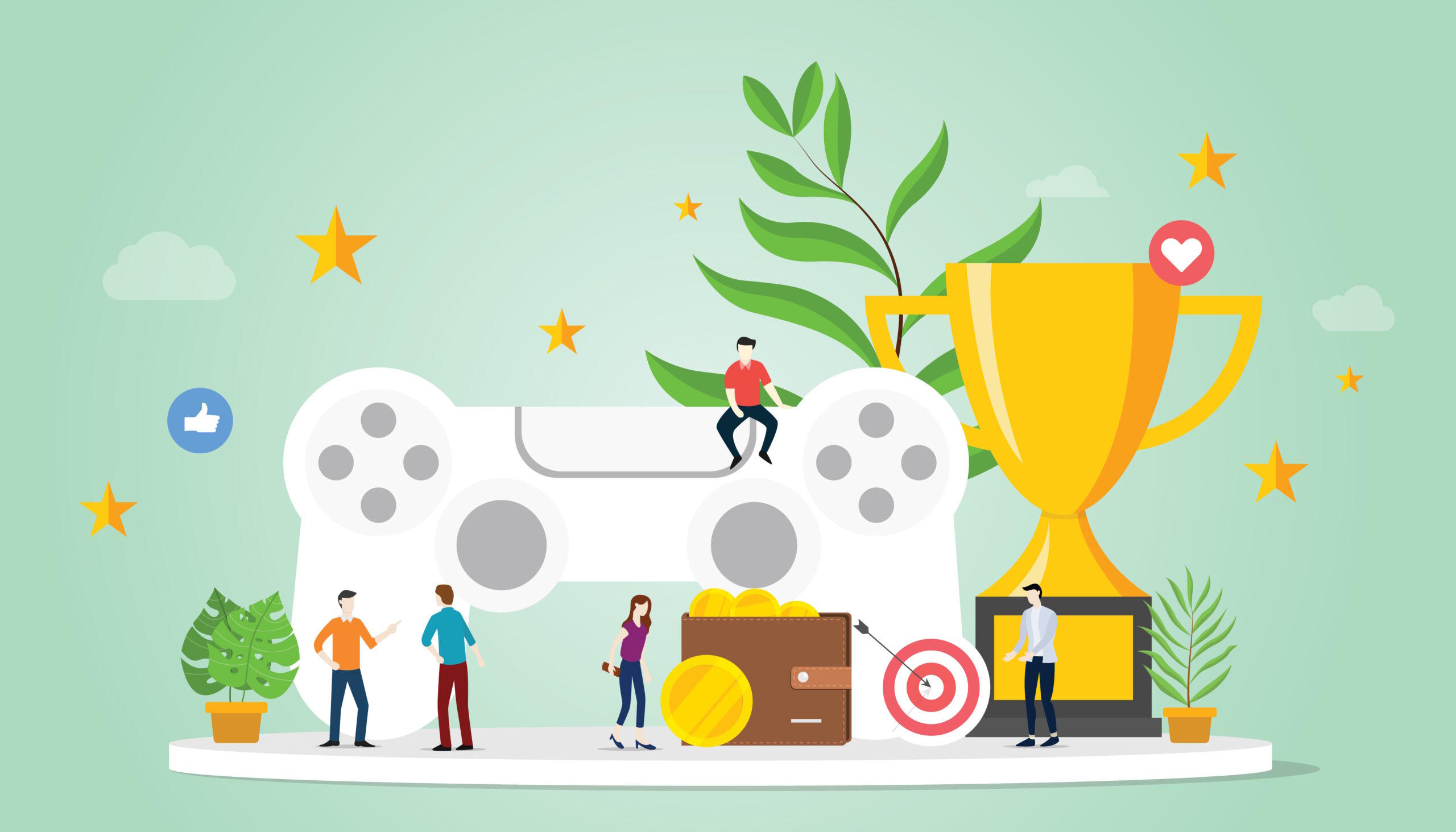You might know ways to make buyers want to buy fast, tricks such as having sales that last for only a short time, showing a countdown clock, or telling them when only a few items are left. But what if you want a fun way to make buyers eager and maybe even share your offer with others? Think about adding a game-like feature when they’re buying. This process is known as gamification.

What is gamification?
Gamification is bringing principles and elements of gaming into a non-gaming context. The idea is to enhance user engagement, motivation, success, and overall experience. Some common gaming elements you may have seen outside of games include badges, leaderboards, achievements, and challenges.
Increasing engagement through gamification is often accomplished by making tasks that aren’t enjoyable to begin with more so, such as a leaderboard at a gym showing how people are progressing in their weight-lifting journeys. Likewise, some of the same elements used to increase engagement can increase motivation by offering personal rewards or turning actions into a competition.
Gaming goes beyond that, though. When used in an educational context, it often increases retention and understanding. Gamification’s ability to encourage creativity and innovation is also instrumental in education and beyond. Gamification even enhances social interaction by fostering a sense of competition and community.
How do I use gamification?
You already know how to do time-limited sales. Take these same talents and create a challenge for your customers. This challenge could be on executing the first few steps of the product or some facts and figures if it’s a physical product. The possibilities are as numerous as your imagination.
The idea of a challenge rolls right into leaderboards and rankings. Create a leaderboard for the results your product provides or rankings related to how much use your product gets. A simple chart with points and digital badges is a much more powerful motivator than you realize.
Digital badges from challenges aren’t your only option when it comes to collectibles. Even with a digital product, you could create a physical knick-knack of some kind as a collectible. This could be as simple as a keychain or as complex as a custom-designed stuffed animal. This will appeal to your super-fans more than the average customer, but with a compelling enough collectible, you’d be surprised who buys in.
While exclusivity is a great way to increase interest, so is mystery. You can create mystery boxes or scavenger hunts depending on your product. Mystery boxes can even be as simple as an unknown discount on your product. The scavenger hunt could result in the winner getting a free product and the rest of the participants getting a discount.
Along that same vein, any time-limited contest can bring repeat and new business to you. Some contest types require checking in with local laws, so be sure everything you do is above board. As long as you’re doing it right by the law and advertising the truth of the contest, you’ll be ready to reap the rewards of your efforts.
Does it really work?
There are many examples of companies using gamification to draw on when you’re planning how it may help you. As with all things in marketing, be inspired by those who have gone before. Take what they’ve done and tweak it for your product and customer base – there’s no need to start from scratch.
While I could call out a specific company, rewards programs are one form of gamification. From credit card points to special deals at the grocery store, the number of companies using rewards for repeat customers is massive. Almost all the major fast-food chains now give you coupons and free food just for using their app over time, for example.
A more specific example of huge success through gamification comes from Japan. In 2021, Gamify partnered with KFC Japan to create a game called Shrimp Attack, which was an advertisement for new products. It was so successful it had to be stopped early due to supply constraints, with a 106% increase in sales over the previous year and redemption rates over 20%.
There are many more examples out there to inspire how you might use gamification in your business. If you’re struggling to wade through it all, contact us here. We can help identify what type of gamification makes the most sense for your product and customer.
